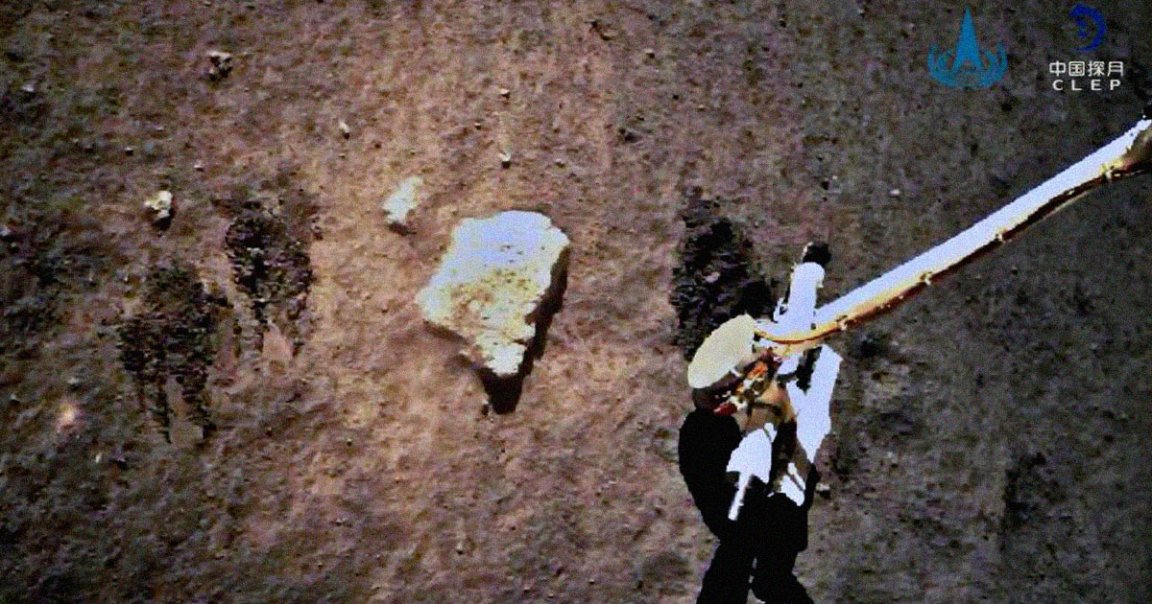
Moonal Beads
China’s Chang’e-5 lander successfully drilled into the surface of the Moon back in 2020, culminating in the first successful sample return mission since the 1970s.
Now that scientists are poring over the data, examining the 3.7 pounds of lunar regolith that were returned by the mission in 2021, they say they’ve made an exciting discovery.
They found an entirely new source of water in the form of tiny glass beads, the Wall Street Journal reports, with potentially revolutionary implications for our future ambitions to establish a more permanent presence on the surface of our closest celestial neighbor.
Glass Matic
As detailed in a new paper published in the journal Nature Geoscience, the lunar surface appears to be teeming with tiny beads of silicate, seemingly formed from asteroid collisions and volcanic activity millions of years ago.
Using spectrometry equipment, the team of Chinese researchers discovered water trapped inside these microscopic spheres. While they’re tiny by themselves, ranging from just a few micrometers to a few millimeters, there are enough of these spheres to amount to an estimated 71 trillion gallons of water spread out across the Moon, according to the team.
Future astronauts could access that water by heating the beads, they suggest.
Water World
The water is likely the result of solar winds depositing hydrogen atoms and reacting with local oxygen in the beads.
“Our direct measurements of this surface reservoir of lunar water show that impact glass beads can store substantial quantities of solar wind-derived water on the Moon and suggest that impact glass may be water reservoirs on other airless bodies,” the paper reads.
Most excitingly, the research leaves open the possibility that similar beads could be found in other parts of the solar system as well.
Outside of these glass beads, researchers have discovered other sources of water as well, including copious deposits of water ice in permanently shadowed craters near the space rock’s poles.
In short, our prospects of finding reliable sources of water on the surface of the Moon have never looked better.
More on the Moon: Harvard Study:We Shouldn’t Rule Out Underground Life on the Moon and Mars